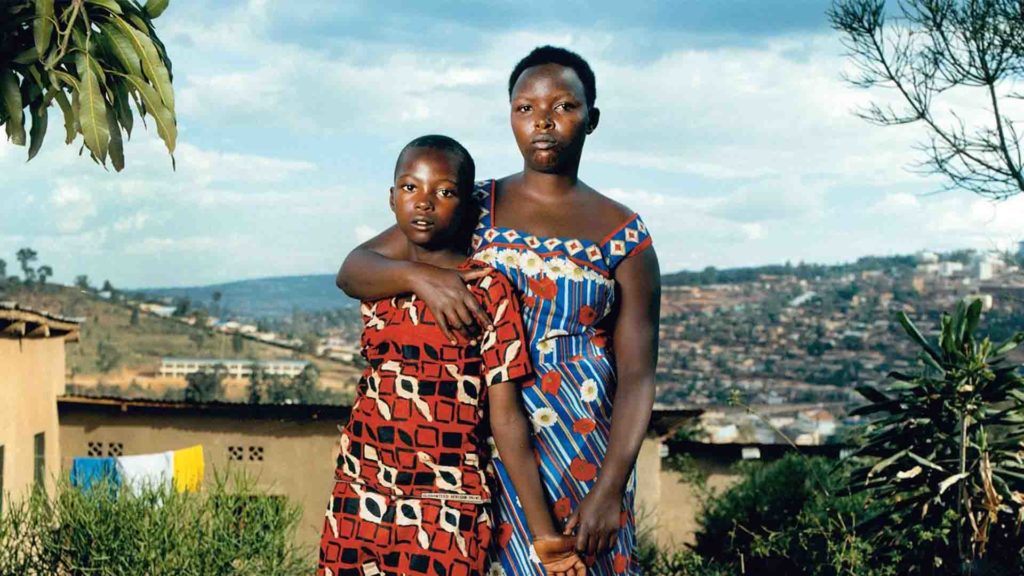In 1994, approximately 800,000 people were suffered from the genocide when Hutus turned on their Tutsi neighbors. During the 100 days of extreme violence, many women were raped at the hands of militias. According to UN statistics, as many as 250,000 were raped. British NGO Survivors Fund (SURF) estimates that 20,000 children were born to women as a result of rape. German photographer Olaf Heine’s new book of photos, “Rwandan Daughters”, highlights the heartbreaking story of these forgotten victims of the genocide.
The photos in “Rwandan Daughters” place mothers alongside their children who were born of rape. Mothers, daughters and sons are photographed at the locations where the crime was committed. In many cases, the violence resulted in lifelong disability or HIV infection. The victims often witnessed the murder of their families at the same time. Today, Rwanda shows a progressive approach toward gender equality. For example, half of the places in the 26-seat cabinet were held by women in 2018. On the other hand, all citizens in Ruanda don’t believe that they can be healed. “The genocide destroyed my life,” says one survivor in the book.
CENTER FOR AFRICAN STUDIES
Center for Africa Studies (AFRAM) which located in Ankara, is an organization facilitating under the administration of African Affairs Council (AFAC). It makes various researches about Africa to enhance economic and cultural bounds between Africa and Turkey. AFRAM’s publishings has been shared with different institutions as they require to obtain.
AFRICA OBSERVATORY
Africa Observatory is one the publishing of AFRAM and it has been published each two weeks. It has been delivered to different institutions via e-mail.
